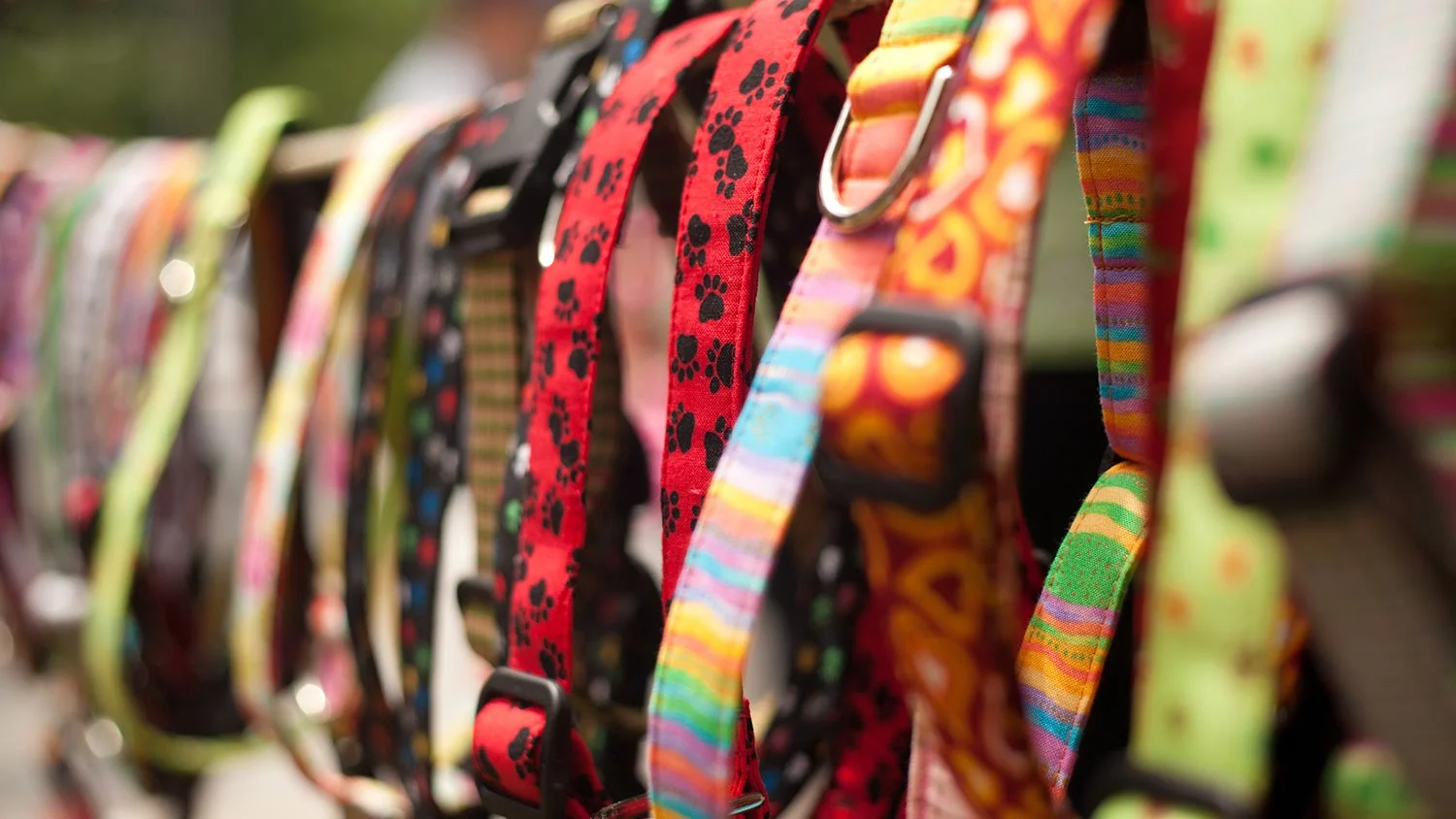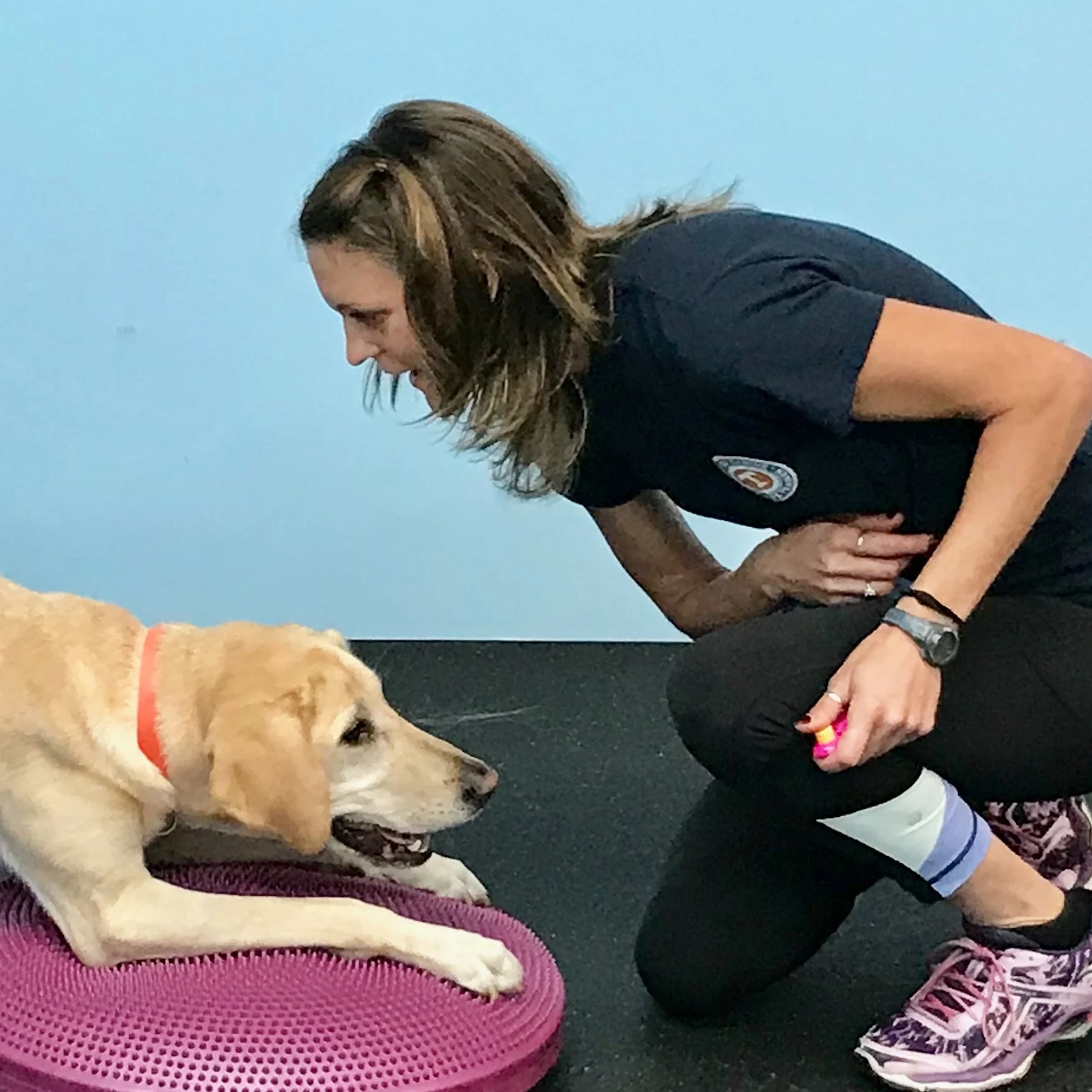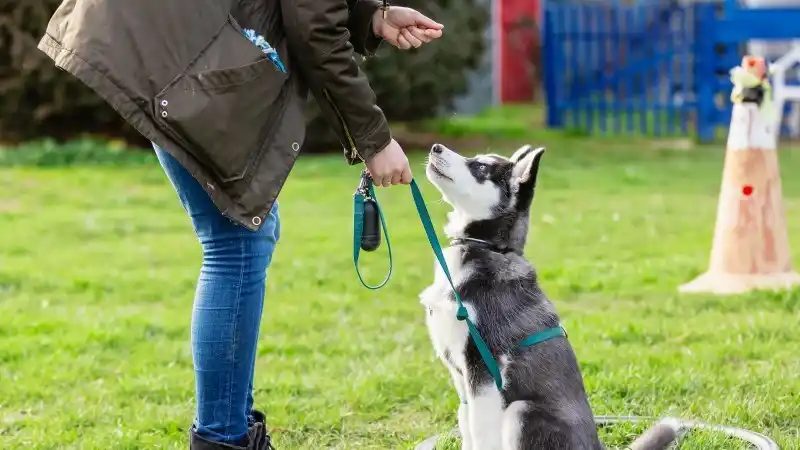Choosing the right canine “tools!”
You’re in the pet store aisle or browsing online - there are so many fabulous choices for canine equipment! Let’s break down some of the basic gear.

You’re in the pet store aisle or browsing online - there are so many fabulous choices for canine equipment! Let’s break down some of the basic gear to help you determine which type will work best for you.
Collars
You have two basic choices. First, the adjustable, flat collar. This is a belt buckle type or a quick-release snap buckle. If your dog doesn’t escape by backing out of a properly fitted collar, this flat collar is the type for you. If your dog puts a lot of pressure on the collar by pulling, you may prefer a buckle, which might have stronger hardware, instead of a quick-release snap.
Second, the martingale collar or limited slip collar. This collar is good for dogs with narrow heads or that are good at slipping out of their collars! The martingale collar will shorten to a fixed length to prevent a Houdini dog from escaping!
Most regular dog owners will want to avoid choke chains and prong collars.
Even if your dog wears a harness for walks, it’s a good idea to have your dog used to wearing a collar occasionally in case the dog ever needs to wear a collar instead of a harness. For example, your dog may not be able to wear a harness if he has a veterinary procedure done to his torso or if he develops a fatty tumor that rubs against the harness.
Don’t forget identification tags! I love the flat tags by boomerang tags, these fun tags by AKC Reunite, or the Canine Good Citizen tags. You could proudly display the Canine Good Citizen tag after your pooch passes the CGC test.
Harnesses
Attaching a leash to a collar on a dog that pulls may put a lot of pressure on the dog’s delicate trachea; you can move this pressure to the dog’s chest by using a harness. Regular harnesses do not reduce pulling. Regular harnesses generally have the leash clip on the dog’s back (versus the dog’s chest). I prefer a soft harness, such as fleece or mesh, or a high quality nylon harness to ensure the harness doesn’t rub and create irritation on my furry friend.
Pulling management tools
For pulling management tools, many dog trainers – including me - favor head halters and harnesses. These devices manage pulling, but do not train your dog how not to pull when they are not wearing the device. With proper training and the tools below, you will be able to successfully control and happily walk your dog.
For the head halters (check out the YUP Head Control Halter or the Gentle Leader), you’ll need to spend a few moments each day for a few days to prime your dog. You’ll gradually introduce the halter to your hound. First, show the dog the halter and give your pup some treats. Then work up to having your pooch take food through the loop. Eventually get your dog to calmly allow you to slip the loop over his muzzle. Then give your dog more treats with the loop over his muzzle - treat, treat, treat! Then you’ll do baby-steps to get your dog comfortable with the halter being clipped behind his head. Treat, treat, treat. Next, clip the leash onto the halter (below his chin) and walk a few steps. Treat! Repeat and eventually walk your leashed dog further distances – 10 feet, 20 feet, and so on. You’ll work up to going for an actual neighborhood walk outdoors! The goal is to never allow your dog to swat at the halter. If a dog establishes the habit of pawing at the halter, that habit is hard to break. You can’t walk your dog when he is trying to paw the halter off!
With harnesses, you can generally put the harness on the dog and then go for a walk. Many owners like this “plug and play” aspect of using a harness over a head halter. Many trainers recommend the Freedom harness or Easy Walk Harness.
Leashes
Afixed-size leash is the traditional leash nylon or leather that is usually 4 or 6 feet long. I prefer this type of leash because it keeps your dog close to you during hikes, training sessions, and in public. In addition, these are ideal for teaching your dog that the “J” shape (a non-tight leash) is the proper position and feeling (no pressure on the dog’s trachea or chest) for walking.
Abungee leash contains a flexible component that was designed to absorb some of the shock to your body when your dog pulls or lunges unexpectedly. We’ve all felt that jolt in our arms, necks, and backs! Here’s a popular brand.
A hands-free (waist)leash attaches to a belt that goes around your waist. This may be ideal for runners. However, don’t zone out – if your dog bolts, you could topple over from the surprise! Be prepared to use your “leave it” command to keep your dog focused on you and moving forward during runs or walks.
Size matters!
Ask your dog trainer or vet tech for help fitting collars, head halters, or harnesses. For leashes, make sure leash width and the hook are not too big (heavy) for your dog – you don’t want to put additional weight on your dog’s neck and collar. You may need to go through several sizes of these tools as your puppy grows. Although it may be expensive to create a collection of different sized puppy collars, harnesses, and leashes, you can keep them for your next puppy, loan them to your friends, or donate them.
Happy shopping!

Jasey Day holds the Certified Canine Fitness Trainer (CCFT) credential through the University of Tennessee. She is a member of the Bobbie Lyons K9FITteam - a team of compassionate canine fitness instructors who actively teach others and continually expand their own knowledge. Since 2004, Jasey has taught a variety of workshops and classes on the following: Puppy, Canine Good Citizen/Family Pet, Advanced Family Pet, Canine Fitness, Canine Swimming, Rally, and Agility. In addition, Jasey has earned over 60 titles in Dock Diving, Agility, Rally, CGC and Trick Dog. Jasey has worked full time for the American Kennel Club since 2007 and teaches at Care First Animal Hospital in Raleigh, NC. Jasey’s Labrador Retrievers spend their free time hiking, training, and snuggling with Jasey.
READ MORE ARTICLES

